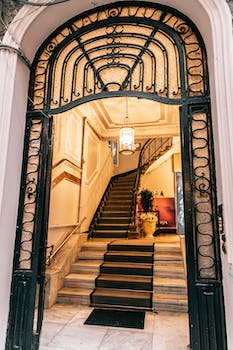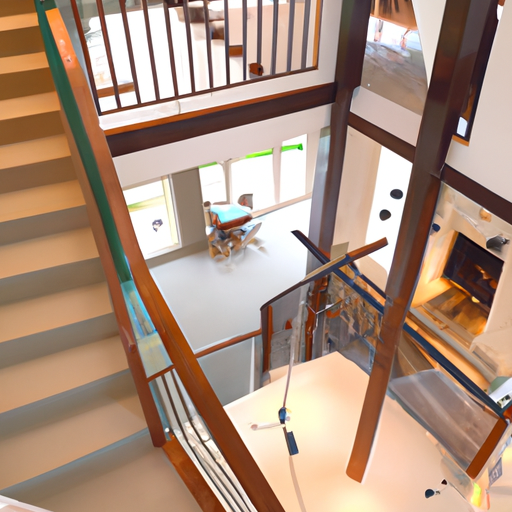Integrating Universal Design Principles for Age-Friendly Modern Complexes
The role of design in creating a modern complex that’s perfect for aging in place cannot be overstated. As the global population continues to age, there is an increasing need for living spaces that cater to the unique needs of older adults. This is where the concept of universal design comes into play. Universal design is an approach to creating environments that are accessible, usable, and appealing to people of all ages, abilities, and backgrounds. By integrating universal design principles into the planning and construction of modern complexes, developers can create age-friendly spaces that promote independence, safety, and well-being for older adults.
One of the key aspects of universal design is flexibility. This means designing spaces that can be easily adapted to meet the changing needs of residents as they age. For example, a modern complex that incorporates universal design principles might include features such as adjustable countertops, modular furniture, and movable walls. These elements allow residents to customize their living spaces to suit their individual needs and preferences, making it easier for them to age in place comfortably.
Another important consideration in designing age-friendly modern complexes is accessibility. This involves creating spaces that are easy to navigate and free of barriers that might impede mobility or create safety hazards. Some examples of accessible design features include wide doorways and hallways, ramps and elevators, and slip-resistant flooring. Additionally, incorporating elements such as grab bars, handrails, and lever-style door handles can make it easier for older adults to maintain their independence and perform daily tasks without assistance.
In addition to flexibility and accessibility, universal design principles also emphasize the importance of creating spaces that are easy to understand and use. This can be achieved by incorporating clear signage, intuitive layouts, and simple, user-friendly technology. For example, a modern complex designed with older adults in mind might include features such as touch-screen controls for lighting and temperature, voice-activated devices, and easy-to-read labels on appliances and fixtures. By making it easy for residents to interact with their environment, designers can help to promote a sense of autonomy and self-sufficiency among older adults.
Another crucial aspect of designing age-friendly modern complexes is the integration of social and recreational spaces. Research has shown that social interaction and engagement are essential for maintaining cognitive health and overall well-being in older adults. By incorporating communal areas such as gardens, lounges, and activity rooms, designers can encourage residents to connect with one another and participate in social activities. Additionally, providing access to fitness facilities, walking paths, and other recreational amenities can help to promote physical health and well-being among older adults.
Finally, it’s important to consider the role of aesthetics in creating age-friendly modern complexes. While functionality and safety are certainly important, it’s also essential to create spaces that are visually appealing and inviting. By incorporating elements such as natural light, warm colors, and comfortable furnishings, designers can create environments that feel like home and promote a sense of well-being among residents.
In conclusion, the integration of universal design principles is essential for creating modern complexes that are suitable for aging in place. By focusing on flexibility, accessibility, usability, social engagement, and aesthetics, designers can create spaces that cater to the unique needs of older adults while promoting independence, safety, and well-being. As the global population continues to age, it’s more important than ever to prioritize age-friendly design in the planning and construction of modern living spaces.
Innovative Architectural Solutions for Aging in Place in Modern Complexes

The role of design in creating a modern complex that’s perfect for aging in place cannot be overstated. As the global population continues to age, there is an increasing need for innovative architectural solutions that cater to the unique needs of older adults. Aging in place, or the ability for seniors to live independently and comfortably in their own homes for as long as possible, is a concept that has gained significant traction in recent years. This is due to the numerous benefits it offers, such as improved quality of life, reduced healthcare costs, and increased social connections. To achieve this, modern complexes must incorporate design elements that promote accessibility, safety, and adaptability, while also fostering a sense of community and well-being.
One of the key aspects of designing a modern complex for aging in place is ensuring that it is accessible to people of all ages and abilities. This can be achieved through the implementation of universal design principles, which focus on creating environments that are usable by everyone, regardless of age, size, or ability. For example, incorporating features such as wide doorways, level thresholds, and step-free entrances can make it easier for older adults to navigate their living spaces, while also accommodating those who use mobility aids such as wheelchairs or walkers.
In addition to accessibility, safety is another crucial consideration when designing a modern complex for aging in place. This involves incorporating features that minimize the risk of accidents and injuries, such as slip-resistant flooring, well-lit spaces, and easily accessible handrails and grab bars. Furthermore, the integration of smart home technology can play a significant role in enhancing safety for older adults. For instance, automated lighting systems can help prevent falls by ensuring that spaces are adequately illuminated, while remote monitoring systems can enable caregivers to keep an eye on their loved ones and respond quickly in case of emergencies.
Adaptability is another essential component of designing a modern complex for aging in place. As people age, their needs and preferences may change, and it is important that their living spaces can be easily modified to accommodate these changes. This can be achieved through the use of flexible floor plans, which allow for the reconfiguration of spaces to meet the evolving needs of residents. Additionally, incorporating modular and movable elements, such as adjustable countertops and cabinets, can make it easier for older adults to maintain their independence and continue performing daily tasks with ease.
Creating a sense of community and well-being is also vital when designing a modern complex for aging in place. Research has shown that social connections play a significant role in maintaining physical and mental health as people age. Therefore, modern complexes should include communal spaces that encourage social interaction, such as shared gardens, lounges, and activity rooms. Furthermore, providing access to amenities and services, such as healthcare facilities, grocery stores, and public transportation, can help older adults maintain their independence and stay connected to their communities.
In conclusion, the role of design in creating a modern complex that’s perfect for aging in place is multifaceted and requires a comprehensive approach that addresses accessibility, safety, adaptability, and community-building. By incorporating innovative architectural solutions that cater to the unique needs of older adults, modern complexes can provide an environment that not only supports aging in place but also enhances the overall quality of life for residents. As the global population continues to age, it is crucial that architects, designers, and urban planners prioritize these considerations to create living spaces that promote independence, well-being, and social connections for older adults.
The Impact of Smart Home Technologies on Aging in Place in Contemporary Living Spaces
The role of design in creating a modern complex that’s perfect for aging in place cannot be overstated. As the global population continues to age, there is an increasing need for living spaces that cater to the unique needs of older adults. One of the most significant trends in contemporary architecture and interior design is the incorporation of smart home technologies that enable aging in place. These technologies not only make life more comfortable and convenient for older adults but also promote their independence, safety, and overall well-being.
Aging in place refers to the ability of individuals to live in their own homes and communities safely, independently, and comfortably, regardless of age, income, or ability level. This concept is particularly relevant today, as the number of people aged 65 and older is projected to nearly double by 2050. Consequently, there is a growing demand for living spaces that can accommodate the changing needs of older adults while allowing them to maintain their independence and quality of life.
One of the most significant ways in which smart home technologies are transforming contemporary living spaces for aging in place is through the integration of automation and connectivity. Home automation systems enable older adults to control various aspects of their living environment, such as lighting, temperature, and security, with the touch of a button or through voice commands. This not only makes it easier for them to manage their homes but also reduces the risk of accidents and injuries that may result from manual operation.
In addition to home automation, smart home technologies also facilitate communication and social interaction for older adults. For instance, video conferencing tools and social media platforms can help them stay connected with friends and family members, reducing feelings of isolation and loneliness that often accompany aging. Moreover, telehealth services and remote monitoring devices can enable older adults to receive medical care and support from healthcare professionals without having to leave their homes.
Another critical aspect of designing modern complexes for aging in place is ensuring that they are accessible and adaptable to the changing needs of older adults. This includes incorporating universal design principles, such as wide doorways, no-step entries, and lever-style door handles, which make it easier for individuals with limited mobility to navigate their living spaces. Additionally, adaptable design features, such as adjustable countertops and cabinets, can be modified to accommodate the changing physical abilities of older adults over time.
Energy efficiency and sustainability are also essential considerations in the design of contemporary living spaces for aging in place. Smart home technologies, such as energy-efficient lighting and heating systems, can help older adults reduce their energy consumption and utility bills. Furthermore, sustainable design features, such as solar panels and green roofs, can contribute to a healthier living environment while minimizing the ecological footprint of the complex.
In conclusion, the role of design in creating a modern complex that’s perfect for aging in place is multifaceted and encompasses various aspects, from smart home technologies to universal design principles and sustainability. By integrating these elements into contemporary living spaces, architects and designers can create environments that not only cater to the unique needs of older adults but also promote their independence, safety, and well-being. As the global population continues to age, it is crucial that we prioritize the development of living spaces that enable individuals to age in place with dignity and grace.
Q&A
Question 1: What are the key design elements to consider when creating a modern complex for aging in place?
Answer 1: The key design elements to consider when creating a modern complex for aging in place include accessibility, adaptability, safety, and social connectivity. This involves incorporating features such as wide doorways, single-floor living, slip-resistant flooring, adequate lighting, and spaces that promote social interaction among residents.
Question 2: How can technology be integrated into the design of a modern complex for aging in place?
Answer 2: Technology can be integrated into the design of a modern complex for aging in place through the use of smart home systems, telehealth services, and assistive devices. This includes installing sensors for monitoring health and safety, voice-activated controls for lights and appliances, and incorporating telemedicine facilities to provide remote healthcare services to residents.
Question 3: How can the design of outdoor spaces in a modern complex contribute to the well-being of aging residents?
Answer 3: The design of outdoor spaces in a modern complex can contribute to the well-being of aging residents by providing accessible and safe walking paths, green spaces for relaxation and socialization, and age-friendly exercise equipment. Additionally, incorporating elements such as seating areas, shaded spots, and sensory gardens can enhance the overall quality of life for older adults.
Conclusion
In conclusion, the role of design in creating a modern complex for aging in place is crucial, as it ensures the integration of accessibility, functionality, and adaptability to cater to the evolving needs of the elderly population. By incorporating universal design principles, technology, and social connectivity, designers can create living environments that promote independence, safety, and well-being for seniors, ultimately enhancing their quality of life as they age.


